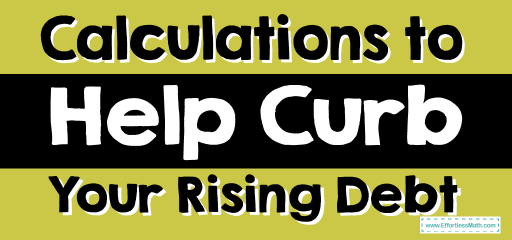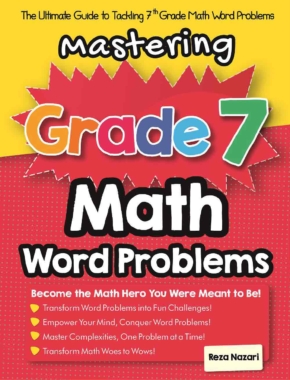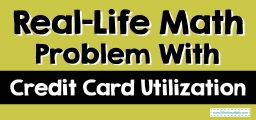Calculations to Help Curb Your Rising Debt

In this blog post, we’ve partnered with Search Ladder, LLC to help you curb your rising debt! Hope you enjoy!
Understanding loans is important, in that if you don’t fully understand the implications of the money that you borrow, it can all too often start to feel like free money. You can convince yourself that you don’t have to pay it back or at least that you don’t need to do so in a hurry. Making some back of the envelope calculations can show you with blunt numbers what your financial obligations will be.
Why These Calculations Matter
It can be all too easy to get in over your head with debt, especially if you miss a payment or two and you start to owe penalties on top of everything else. You can also find yourself in trouble if you are only making minimal payments because these might not be enough to keep up with the interest rates. In fact, people can actually find the amount of money they owe rising even though they are making regular payments. This is not an uncommon scenario with student loans. Falling behind on any kind of payments can have repercussion for your credit score, which can make it harder later to rent or buy a home or even work in certain jobs. For these reasons, whenever you borrow money, you need to think carefully about how long it will take you to pay it back and how much it will cost you.
Student Loans
It’s important to understand what your monthly payments will be like for student loans so that you don’t end up taking out too much money in proportion to what your salary will be after graduation. In other words, a future doctor may be able to borrow more money than a future social worker. You can use a student loan repayment calculator to get a rough estimate of what your payments will be if you are borrowing from a private lender. A calculator is generally better than trying to do it manually because there are some complicated variables with student loans.
However, it can be instructive to do a manual calculation to show you how interest accumulates. First, you need to get your daily rate. You would do this by dividing your annual interest rate by 365. If the rate is 5%, that would be .05/365. Next, multiply the balance of your loan by that daily rate. This shows you how much is accruing daily. Multiply this by how many days it has been since your last payment to see how much in total you have accumulated since then. When you see how easily this accumulates, it motivates you to pay off your debt even faster.
The Best Book for 8th-grade Students
Home Loans
You may be most familiar with this as a mortgage. This is also often described as a form of good debt since ideally, your house appreciates, and it is usually more financially advantageous to borrow money to buy a home than to pay cash for it up front. However, this doesn’t mean you should sign eagerly on the dotted line to take out a mortgage without doing plenty of research. Just because you are approved up to a certain amount doesn’t mean that it’s to your advantage to take the maximum amount. To make sure you will be able to stay on top of what you owe, you could calculate what your payments will be. You could do this with a calculator, but doing it by hand can give you some insight into the financial nuts and bolts of it all.
For a fixed rate mortgage, first, you need to know your mortgage principal or the amount of money you originally borrowed. Next, you need to know the monthly interest rate. To determine this, divide the annual interest rate by 12. For example, if your annual interest rate is 6%, your monthly rate will be .5%. Remember to turn your percentages into decimal points and back, so the math would be .06/12=.005. Next, figure out how many months this will last by multiplying the length of your mortgage in years by 12. Here is the formula that you will then use to make that calculation if X is your monthly payments, P is your principle, m is your monthly interest rate and h is how many months you’ll be paying:
X = P [ m(1 + m)^h ] / [ (1 + m)^h – 1]
If this looks confusing, just keep the order of operations in mind. Starting with parentheses, you do exponents and multiplication followed by division. Finally, you perform any addition and subtraction. You can check your work with a mortgage calculator.
Credit Cards
Many people do not think of credit cards as loans, but that is exactly what they are. They are a type of revolving credit, meaning that you have access to a certain maximum amount, but you generally do not take that amount all at once. However, as long as your account remains in good standing, you can take money from your account. Unfortunately, the interest rates on credit cards tend to be high, and this means that while you might feel like you are making a problem go away or getting something practically for free when you put it on your card, the truth is that you may end up paying a lot more for that items in the long run. This is why it is better to save up for things and have an emergency savings fund instead of depending on your credit card.
You can look at what a difference paying even just a few dollars above the minimum amount on your credit card can make over time. Calculate your daily interest by dividing your annual rate by 365. This gives you your daily periodic rate. Multiply this by your average daily balance, which you should be able to find on your credit card statement. Finally, multiply this by 30 or by however many days are in your billing cycle. You’ll see how much of your monthly payment goes to interest. This can help motivate you to pay down that bill and look to other sources for funding in the future.
Learn how to buy Tether using a credit or debit card: Buy USDT
The Best Books for Elementary Students
Related to This Article
More math articles
- How to Understand Dilations: A Step-by-Step Guide
- Top 10 3rd Grade MEAP Math Practice Questions
- 6th Grade SBAC Math Worksheets: FREE & Printable
- Different Question Types on the ACT Math Test
- 8th Grade PSSA Math Practice Test Questions
- Overview of the SAT Mathematics Test
- 5th Grade MAP Math FREE Sample Practice Questions
- Top 10 Tips to Create the FTCE General Knowledge Math Study Plan
- Praxis Math Formulas
- 9 Best Math Websites for Teachers and Students















What people say about "Calculations to Help Curb Your Rising Debt - Effortless Math: We Help Students Learn to LOVE Mathematics"?
No one replied yet.